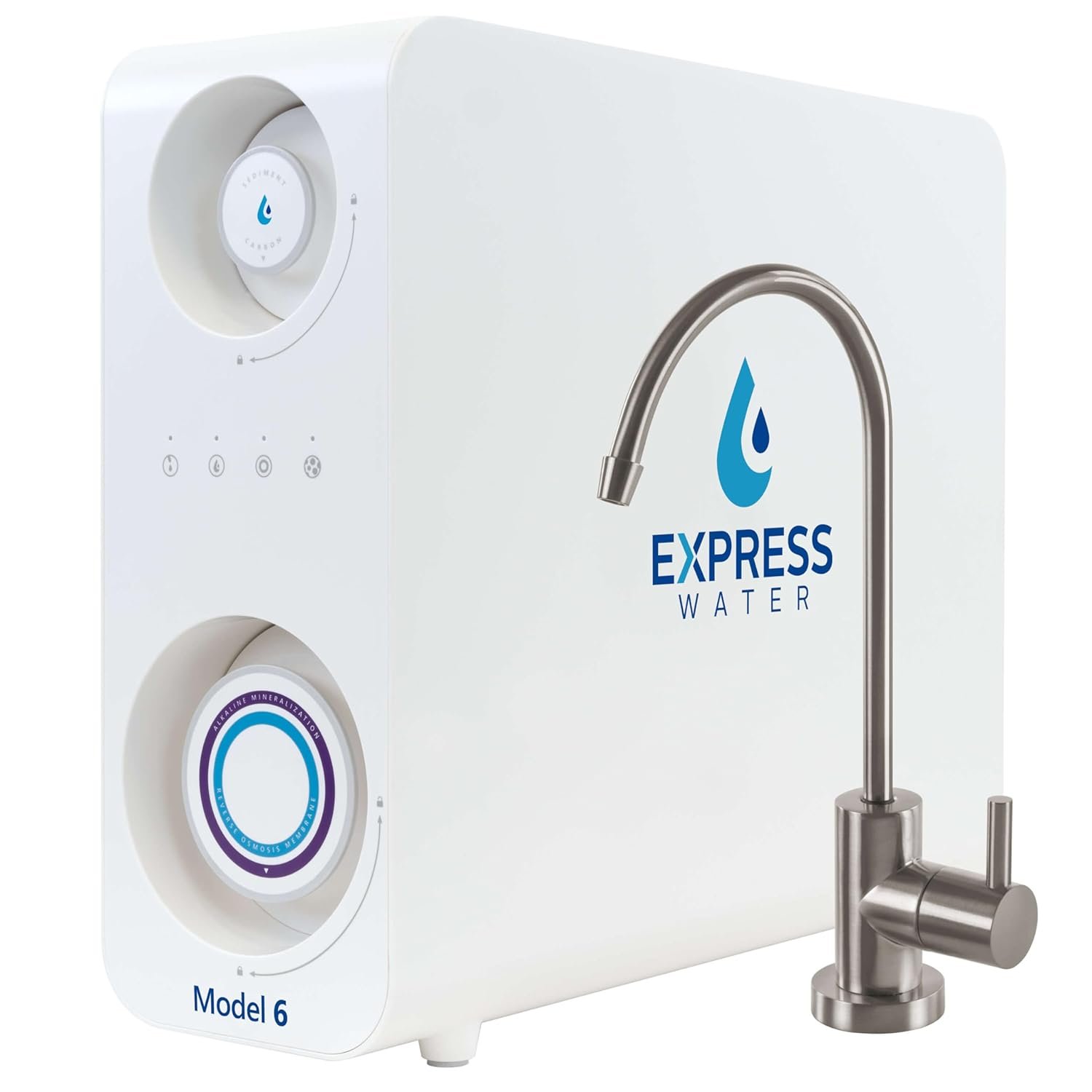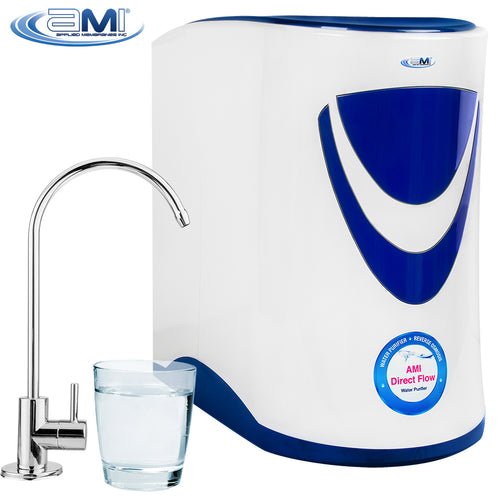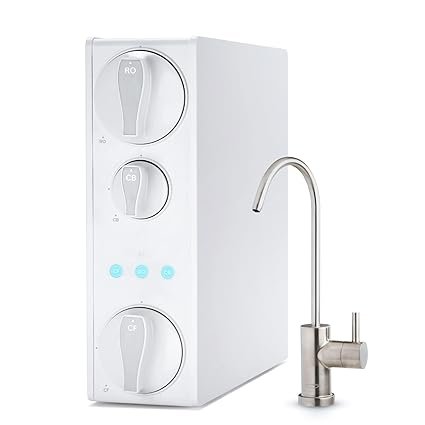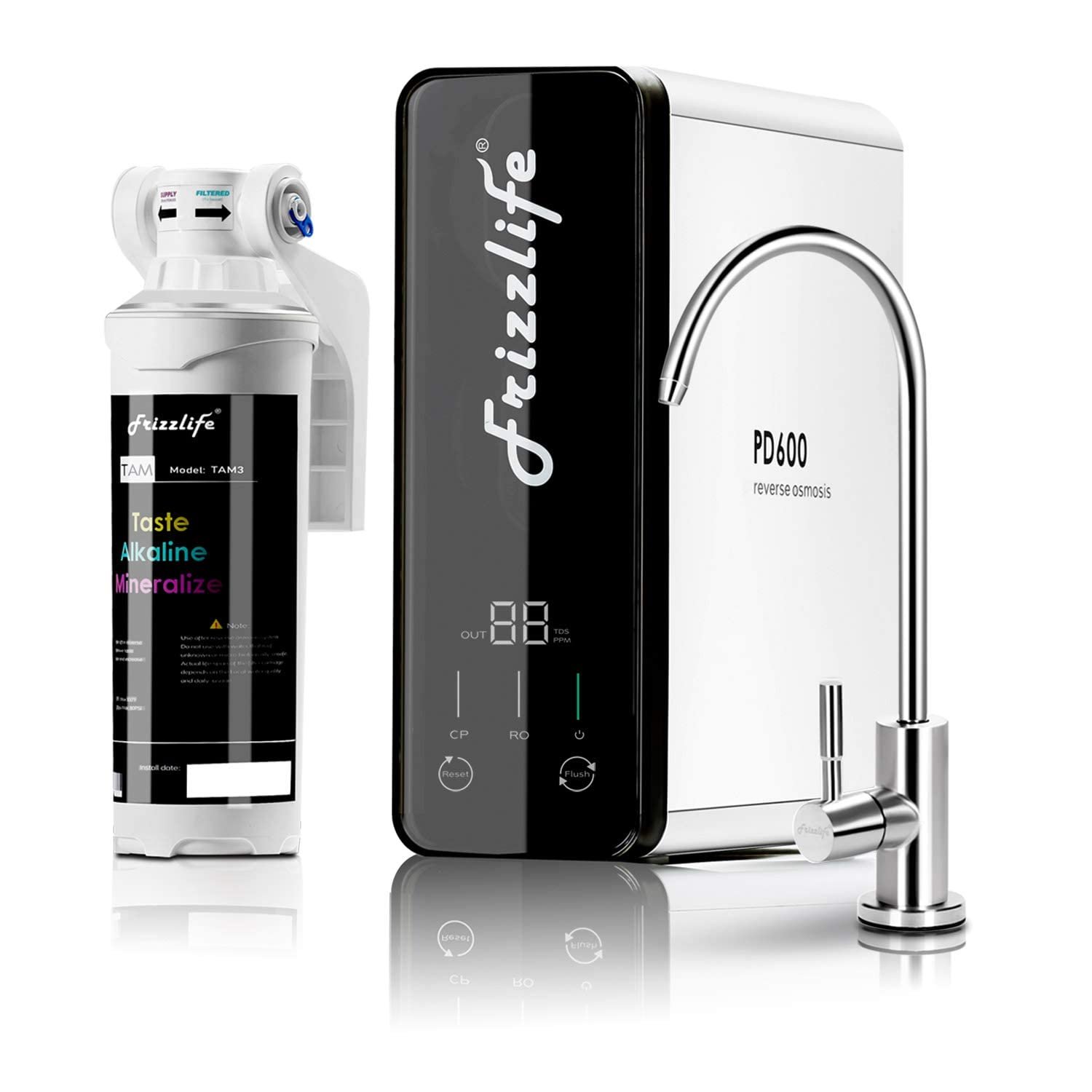Physical Address
304 North Cardinal St.
Dorchester Center, MA 02124
Physical Address
304 North Cardinal St.
Dorchester Center, MA 02124
Tankless RO systems provide instant
purified water with modern space-saving designs and reduced energy use.
Upgrade your home’s water quality with high-efficiency reverse osmosis systems that combine advanced filtration, space-saving designs, and eco-friendly performance.
Quick Overview:
| Product Name | Key Features | Price | Rating |
|---|---|---|---|
| Express Water 600 GPD | 2:1 pure-to-drain ratio • Quick-twist filters • 600 GPD flow | $349.99 | 4.6/5 |
| AMI Direct Flow | 4-stage filtration • Booster pump • Automatic operation | $499.99 | Not available |
| iSpring RO500-BN | NSF-certified • 500 GPD • 2:1 drain ratio | $539.99 | 4.6/5 |
| Waterdrop G2 | 7-stage filtration • 1:1 drain ratio • Compact design | $299.99 | 4.5/5 |
| Frizzlife PD600-TAM3 | Alkaline pH • 600 GPD • Smart TDS display | $375.99 | 4.6/5 |

Features Overview:
What’s Good & What’s Not:
Price & Value Assessment: Priced competitively at $349.99, it offers excellent efficiency and low maintenance costs.
What Customers Are Saying: Many highlight the improved water taste and ease of installation, though a few note minor leakage issues.
Why Should You Buy It? This system suits budget-conscious buyers seeking a balance of performance and sustainability. Its quick-filter design and efficient water use reduce long-term costs, while the high flow rate meets daily demands effortlessly.

Features Overview:
What’s Good & What’s Not:
Price & Value Assessment: At $499.99, it’s a premium choice for users needing robust industrial-grade filtration.
What Customers Are Saying: Insufficient data due to lack of reviews.
Why Should You Buy It? Ideal for tech-savvy households or small businesses requiring heavy-duty purification. The built-in pump guarantees consistent performance even with low inlet pressure, while the compact build maximizes space efficiency.

Features Overview:
What’s Good & What’s Not:
Price & Value Assessment: At $539.99, it’s a worthwhile investment for verified purity and durability.
What Customers Are Saying: Users appreciate the reliable water quality and space-saving profile, though some mention the cost.
Why Should You Buy It? Perfect for families prioritizing certified safety and low maintenance. The automatic cleaning extends filter life, reducing replacement frequency, while the high-capacity flow supports large households effortlessly.

Features Overview:
What’s Good & What’s Not:
Price & Value Assessment: Priced at $299.99, it’s a budget-friendly option with premium features.
What Customers Are Saying: Positive feedback on taste and installation ease, though some note slower refill times.
Why Should You Buy It? Best for small households or eco-focused users wanting maximum efficiency. The ultra-low drain ratio conserves water, while the multi-stage filtration ensures comprehensive contaminant removal without sacrificing under-sink space.

Features Overview:
What’s Good & What’s Not:
Price & Value Assessment: At $375.99, it delivers advanced features for health-focused users.
What Customers Are Saying: Praised for improving water taste and providing mineral-rich output, with many noting the intuitive interface.
Why Should You Buy It? Ideal for those seeking healthier hydration without compromising convenience. The remineralization filter restores essential nutrients, while the high flow rate and smart monitoring cater to busy households needing reliable, high-quality water.
This article contains affiliate links. As an Amazon Associate, I earn from qualifying purchases.Prices may vary depending on location, promotions, and availability.
“GPD” stands for Gallons Per Day. It tells you how much purified water the system can produce in a single day. So, a 600 GPD system can make up to 600 gallons of clean water every 24 hours.
This ratio tells you how much water the system wastes to produce clean water. A 1:1 ratio means for every gallon of purified water, one gallon goes down the drain. A 2:1 ratio is better because it means you get two gallons of clean water for every one gallon wasted. Less waste is always a plus!
Not necessarily. More stages can mean more thorough filtration, but it also depends on what each stage does. A system with fewer, but high-quality, filtration stages can be just as effective as one with many. Consider the specific contaminants each stage targets.
TDS stands for Total Dissolved Solids. It measures the amount of minerals, salts, metals, etc., in your water. Lower TDS generally means purer water. Monitoring TDS helps you know when to change your filters to maintain optimal water quality. Some systems, like the Frizzlife PD600-TAM3, have a smart TDS display to help with this!
Most of these RO systems are designed for easy installation, with quick-connect fittings and clear instructions. However, if you’re not comfortable with basic plumbing, getting a professional to install it might be easier. Be sure to check out installation guides on the product pages.
Here’s the full list of products on Amazon